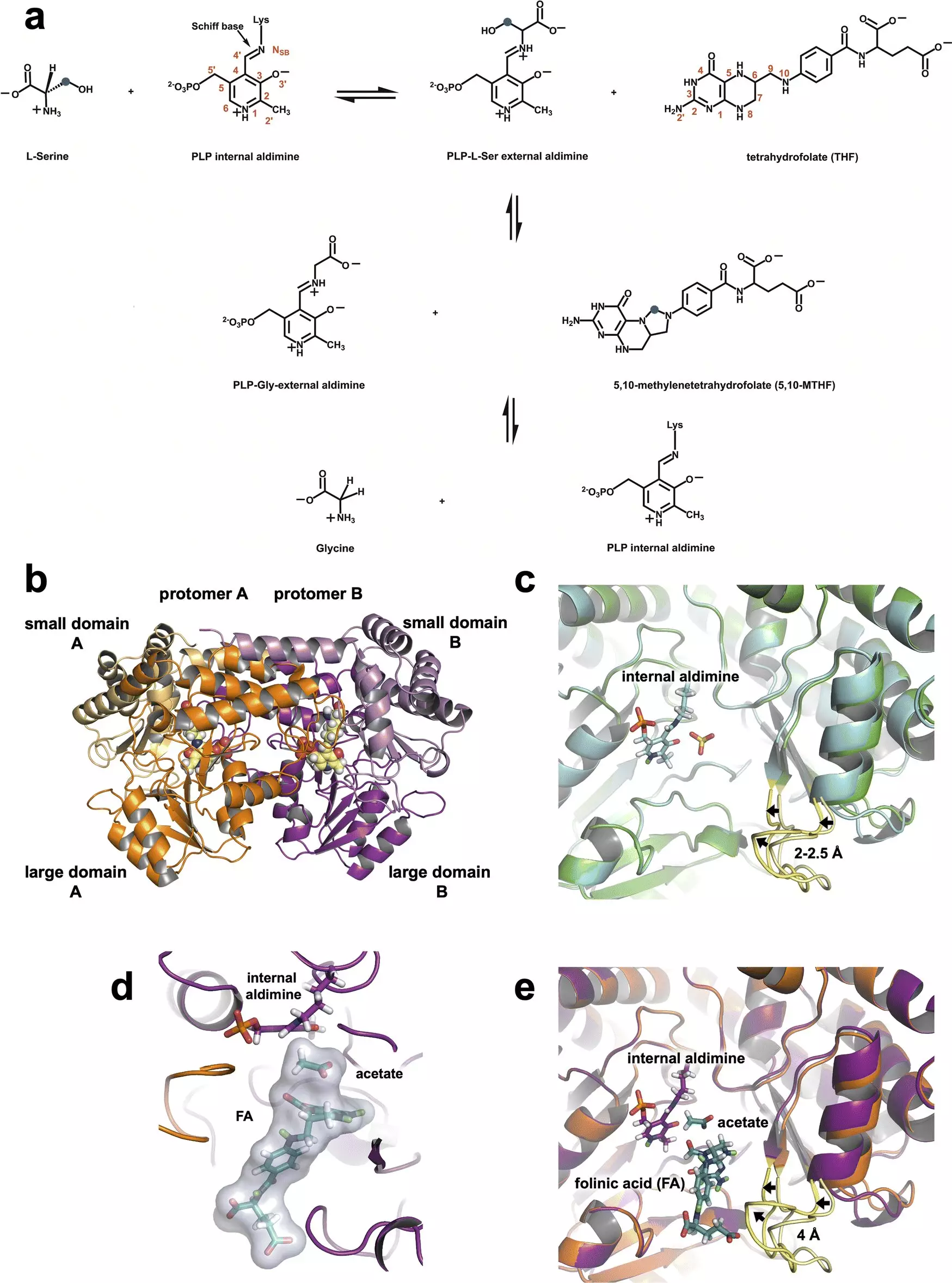Cancer remains one of humanity’s most formidable health challenges, evading effective treatment through a cunning adaptation of cellular mechanisms. In a recent groundbreaking study conducted at the Department of Energy’s Oak Ridge National Laboratory (ORNL), researchers offered fresh perspective on one such mechanism, probing the role of the enzyme serine hydroxymethyltransferase (SHMT) with the aid of neutron experiments. This research could drastically influence therapeutic strategies against aggressive forms of cancer.
By utilizing neutrons at both the Spallation Neutron Source and the High Flux Isotope Reactor, scientists managed to elucidate the atomic-scale operations of SHMT—an enzyme crucial for cellular metabolism and division. Cancer cells, notoriously adept at manipulating metabolic pathways, specifically commandeer SHMT to fuel their rapid proliferation. The implications are clear: developing an inhibitor to stifle SHMT could potentially disrupt this aberrant metabolic support system the cancer employs, serving as a promising approach for treatment.
Victoria Drago, a leading biochemist in the study, emphasized the significant advantages that neutron diffraction offers. “Neutrons will be highly sought after in future structure-based drug design,” she noted, underlining the method’s unique ability to resolve outstanding questions about SHMT that have lingered since the 1980s. This long-standing ambiguity about its catalytic mechanism is being addressed, leading to novel insights into enzyme functionality.
Central to this study was the discovery of how a single glutamate residue acts as a regulatory element for SHMT’s reaction processes. Here, Robert Phillips, a co-author of the study, elucidated the insight gained from neutron data: glutamate remains protonated, contrary to previous assumptions that it would have lost its proton. This capability allows glutamate to oscillate between acidic and basic roles, a dual function that is pivotal in chemical reactions facilitated by SHMT.
In the framework of one-carbon metabolism, SHMT mediates a critical transformation whereby serine is converted into glycine, featuring tetrahydrofolate as a co-factor. This reaction is not just biochemical trivia; it produces essential precursors needed for nucleic acids formation, playing a quintessential role in cellular division. Through their observations, Drago and her colleagues established that glutamate is not merely a passive player but an active contributor to the enzyme’s function.
The Methodology: Intersection of Neutrons and X-rays
To unlock the structural intricacies of SHMT, the researchers harnessed both neutron and X-ray diffraction—two methodologies that complement each other in revealing the architecture of complex proteins. While X-rays penetrate heavier elements and provide a glimpse into the enzyme’s overall structure, neutrons shine when detecting the lighter hydrogen atoms that frequently govern biochemical reactivity. Through the innovative combination of these techniques, the research team was able to achieve unprecedented clarity regarding the enzyme’s function and regulatory mechanisms.
The successful deployment of this dual approach underlines the fact that hydrogen atoms play an extensive role in molecular interactions, specifically in enzyme catalysis. Drago aptly summarized the significance, noting how knowing the positions of hydrogen atoms could aid in illuminating the electrostatic landscape of the enzyme, vital information when designing inhibitors to combat cancer’s insidious growth.
Having thoroughly detailed SHMT’s structure and function, the next logical step is to engineer specific inhibitors targeting this enzyme as part of a multi-faceted cancer treatment strategy. SHMT serves as an advantageous target in one-carbon metabolism; intervening at this early stage could preemptively cut off the resources that enable cancer cells to proliferate. Kovalevsky pointed out the intricate dance of cancer metabolism, which often recalibrates in response to therapeutic pressures, underscoring the need for innovative treatments that can outsmart the disease.
This shift in therapeutic focus is crucial given the challenge of distinguishing pathogenic cells from healthy ones in traditional cancer treatments; a fine line that often results in debilitating side effects. Designing effective inhibitors for SHMT may allow oncologists to halt cancer’s advancement more effectively and with potentially fewer adverse outcomes.
Beyond this essential research, the future of cancer treatment seems intertwined with advancements in artificial intelligence and genetic sequencing. As William Nelson, director of the Sidney Kimmel Comprehensive Cancer Center, indicated, we are moving towards an era where the ability to customize therapies based on an individual’s genetic makeup could become a reality. Although we are not there yet, studies like that of ORNL lay the groundwork for breakthroughs that may soon transform the approach to cancer treatment in profound ways.
Advances in neutron diffraction techniques and a deeper understanding of SHMT open up new avenues for drug development against cancer, marking a promising chapter in the ongoing battle against this pervasive disease. Bridging the gap between fundamental research and clinical application will be crucial as we strive for a future where cancer therapies are more effective and less damaging to the patient.

